Effective marketing is somewhat tricky to get right, and between creative demands, budget constraints, and channel decisions, businesses have a lot of elements to consider and understand prior to developing their marketing strategies and budget allocations.
The biggest factor of effective marketing, however, is your audience.
In case you’re not appropriately focusing on your buyer persona, your promotions and advertisements will probably fail to receive any notice or will reach the wrong target audience.
Where target audiences differ the most, however, is between individual consumers and organizations. A few organizations serve singular customers, while others cater to organizations, associations or governments.
Marketing to organizations is altogether different than marketing to singular consumers. That is the reason a completely unique promoting technique — B2B advertising — exists, and that is the reason behind this guide. When completing this article, you will have a better understanding of B2B advertising, the best B2B practices, and how you can take advantage of and convert your business audience.
B2B marketing
B2B (business-to-business) marketing means that any marketing strategy or content that is geared towards a business or organization. Any organization that offers products or services to different organizations or associations (versus consumers) ordinarily utilizes B2B promoting techniques.
B2B vs B2C Marketing
B2B and B2C (business-to-customer) marketing are totally different. B2B and B2C marketing vary in their individual strategies and applications, just as in their audiences and how they communicate to them.
B2B marketing focuses on the needs, interests, and difficulties of people who are making purchases on behalf of, or for, their organization, subsequently making the organization the customer. Below are examples of B2B businesses:
- A coworking space that leases office spaces to remote teams and freelancers
- An on-demand order satisfaction, warehousing, and screen printing service
- A marketing software company that sells social media management tools, lead generation software, and other marketing tools to businesses and organizations
B2C marketing targets the requirements, interests, and difficulties of individual consumers who are making purchases for themselves and where they are the customer. Below are some examples of B2C businesses:
- An e-commerce company that sells office supplies to remote or self-employed individuals
- A store that sells t-shirts and other clothing and accessories
- A music platform that sells streaming subscriptions
B2B Marketing Strategies
As mentioned above, marketing heavily relies upon its audiences. While B2B and B2C marketing differ, not every piece of B2B advertising material is alike, either. We will further explore the B2B advertising systems and tools you can use in order to reach the accurate target audience to ensure that firstly we understand the B2B buyer’s journey.
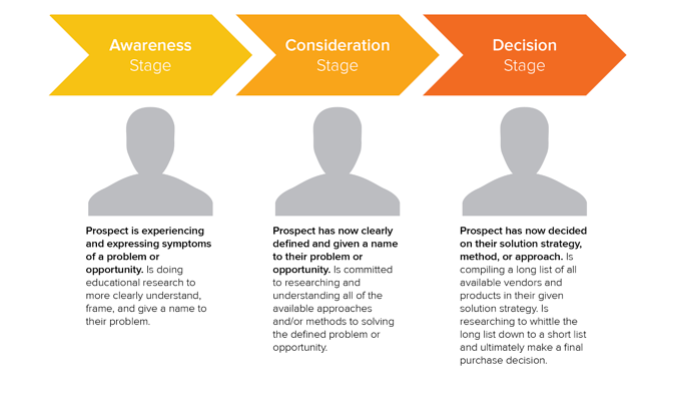 B2B Email Marketing
B2B Email Marketing
Email marketing is a reliable technique for reaching both individual consumers and business consumers. Did you realize that 93% of B2B advertisers use email? Is it true that you are one of them? You should be. Emails lead to commitment which transforms subscribers into leads … and then customers.
Not at all like B2C clients who react best to emotions and entertainment, B2B customers search for logic and positive ROI. Basically, they’re asking themselves, How can your business assist my business to grow? Along these lines, your email marketing must consistently resonate with your business customers and spotlight things that make a difference to them — like time, money, and assets.
Email marketing is likewise a powerful vehicle for sharing your brand’s content. 83% of B2B organizations use email newsletters as a component of their content marketing program, and 40% of B2B marketers say these newsletters are most critical to their content marketing achievement.
With the consistent blast of emails flooding our inboxes today, it’s a higher priority than at any other time to make and convey effective marketing emails.
B2B Email Marketing Best Practices
- Write attention grabbing subject lines. Consider your email headlines as a Netflix trailer — if you can’t hook your audience with a two-minute clip (or, for this situation, two or three dozen characters), don’t anticipate that they should open and watch (or read) the entire thing. We suggest investing nearly as much energy in your email titles as you do on the actual messages.
- Stick to one call-to-action (CTA) per email. If you think the quantity of emails you get is a great deal, investigate the CTAs in those emails … some are loaded with two, three, and once in a while up to 10 distinctive CTAs. Try not to commit this error, which can leave your recipients’ minds spinning, asking “What should I click on first?” and eventually clicking on nothing. With one CTA per email, you permit your audience to focus on your email content and at last one activity … a welcome reprieve from the present frequent decision-making and analysis paralysis.
- Segment your email to reach the most pertinent audience. Only one out of every odd email you send will be fitting for everybody on your list. Your subscribers might be at various phases of the buyer’s travel or be looking for changed arrangements. That is the place where email list division becomes possibly the most important factor. In addition to the fact that this helps you identify with your audience better, yet it gives your emails that personal feel that says “Hello, I’m tuning in and I understand what you’d prefer to see.” Consumers choose email quality over quantity anytime.
- Ensure your email designs are responsive. More than 80% of email users access their inboxes on their phones, and emails that don’t appear effectively on cell phones are often erased in three seconds. Ouch. Try not to leave your email one of those.
- Try not to fear the cold email. However awkward as it could be, the correct email can convert new customers — like this cold deals email that won 16 new B2B clients.
B2B Digital Marketing
Each business, regardless of whether B2B or B2C should have a digital presence — including paid promotions, search engine optimization, a website, and other platforms where B2B business is active online. Here we will walk through a handful of tactics that can strengthen your B2B digital marketing strategy.
Define your target audience
A solid B2B digital marketing strategy begins with characterizing your target audience, or buyer persona. This demographic and psychographic data will advise pretty much every other marketing activity from there on, guaranteeing your content and digital material is consumed by the correct eyes and ears (and that no assets go to waste on your end).
Create your website
Digital marketing can’t exactly work without an informative, engaging website. More than 80% of buyers visit a site prior to making a purchase. Also, since the normal B2B sales cycle frequently includes many key players (like gatekeepers, decision-makers, and different people who have to buy into a purchase), websites are simple, direct ways for influencers to share data about your product or service.
Optimize your digital presence
Your website should be more than informative and engaging – it should be discoverable. This can be done with on-page SEO and specialized SEO strategies. These incorporate everything from picture alt-text and meta descriptions (what your visitors can see) to structured information and site speed (what your visitors can’t see). Off-page SEO is likewise impacting everything here, which refers to external linking strategies and social sharing — SEO strategies that occur off your website.
Execute PPC campaigns
Lastly, balance your digital presence with pay-per-click (PPC) advertising, which allows for the content and brand to be visible through search engines and other advertising platforms. It is a good idea to maximize your PPC investment by advertising more than your particular products or services — like your brand personality, blog or social media content, or an organization slogan.
The most ideal approach to see an ROI from your paid promotions is by
1) fusing your purchaser persona information and
2) boosting content that they can identify with. For instance, it’s highly impossible a brand new customer who’s never known about you is looking for your exact product.
They might be looking for an area-based solution or product feature. To reach the best number of potential customers, pay to target relevant categories inside your brand versus promoting your product or services.
B2B Content Marketing
As B2B clients are focused on expertise, driven by logic, and want to be educated, what better-marketing tool to fulfill these needs than B2B content marketing?
Though a traditional PR marketing strategy intrudes on a purchaser’s every day with promotional material, a content marketing strategy adds significant data and informs the consumer — which is precisely what B2B clients are searching for. Also that content marketing upholds SEO efforts, which includes expecting what your audience is looking for, assisting them with finding your website and content … and potentially converting them over to customers.
In fact, 80% of businesses like to get data from an article than a promotion. Knowing this, it is safe to say that businesses should put more effort into their content marketing rather than your traditional advertising.
Since the B2B buyer’s journey is somewhat not quite the same as the B2C buyer’s journey (which has more limited sales cycles and fewer managers included), the content you make for your B2B content marketing strategy may differ more than the content you have experienced as a buyer yourself.
Prior to making content, it is suggested to start with a business blog. The blog will house all the content which will serve as a home-base for readers to visit and subscribe to.
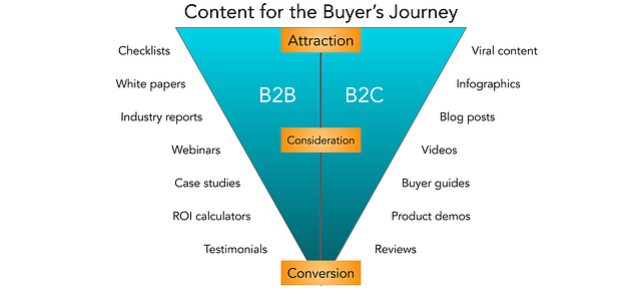 B2B Social Media Marketing
B2B Social Media Marketing
Around 75% of B2B purchasers and 84% of C-Suite level use online media when making a purchase. Believe it or not — social media marketing isn’t only for brands targeting individual consumers.
Many B2B organizations struggle with social media marketing, however, it tends to be more hard to utilize social media to associate with business customers, there’s ordinarily a lengthier sales cycle and longer chain of command.
Truly, B2B social media marketing won’t be the place where you convert the best number of leads, and that is OK. It probably becomes possibly the most important factor near to the start of the clients’ buyer’s journeys.
Social media is an incredible tool for building brand awareness, giving your organization an online character, and humanizing your business — all very powerful factors with regards to marketing and connecting with potential customers. Like email marketing, social media is additionally a profoundly powerful channel for sharing your content and improving your brand expertise, the last of which we know B2B clients appreciate.
While your social media accounts probably won’t convert as frequently as your content or email marketing, they’re comparably significant. Followers are just as valuable — no one can really tell when they may transition from a follower to a lead and then a client.
B2B Marketing Examples
A B2B marketing approach that works for one business may not work for another, but that’s not to say we can’t learn something from the pros. Here are four B2B marketing examples that have ‘Done it right’.
Email Marketing: Mattermark, Raise the Bar Newsletter
Raise the Bar is a daily digest newsletter from Mattermark featuring valuable findings from leaders in sales, marketing, and growth engineering. Carefully selected by Mattermark executives and easy to scan, which is valuable in a world of elaborate, complicated newsletters and daily digests.
This is a genuine example of B2B email marketing on the grounds that Mattermark takes time to educate their subscribers without blatantly selling to them. This step built the trust with their audiences over a period of time while also equipping them with everything they need to know in order to make a purchase and become a paying customer.
Digital Marketing: Maersk, Website Homepage
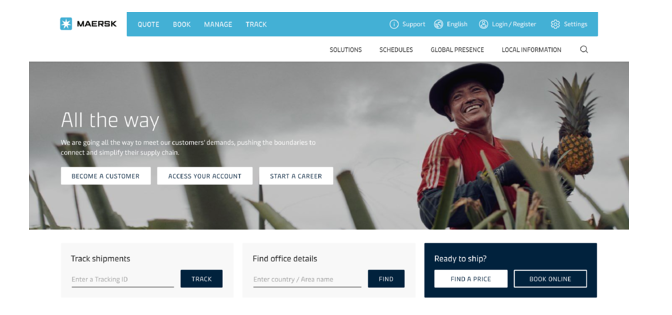 It’s almost difficult to know the plan of each and every individual who lands on your website, yet Maersk’s homepage design makes it simple for visitors to discover their way around.
It’s almost difficult to know the plan of each and every individual who lands on your website, yet Maersk’s homepage design makes it simple for visitors to discover their way around.
By offering three principle options (“Become a Customer,” “Access Your Account,” and “Start a Career”), Maersk clearly segments their audience and permits visitors to handily explore the site content that relates with their intent.
This small design change also helps Maersk construct trust and authority inside every one of these niche audiences — potential customers, current customers, and even employees.
Content Marketing: LeadPages, Blog + Resources
LeadPages has been bootstrapped since its initiation in 2012 … yet it hit more than $16 million in income only three years later. Its owner credits its fast accomplishment to its content strategy, which makes it an extraordinary example of B2B content marketing.
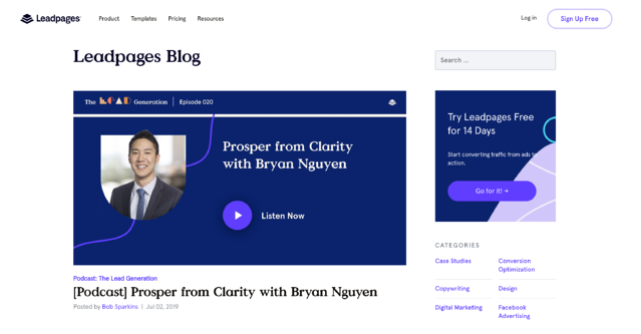 LeadPages produces various sorts of content resources, like a blog, customer stories, a podcast, and a webinar. The variety in these resources permits the organization to reach customers where they are utilizing the strategy that best impacts them.
LeadPages produces various sorts of content resources, like a blog, customer stories, a podcast, and a webinar. The variety in these resources permits the organization to reach customers where they are utilizing the strategy that best impacts them.
LeadPages offers a blog that covers themes, for example, A/B testing, lead generation, and different topics that identify with the product and brand, a week by week podcast that chats with ordinary entrepreneurs, and even a definitive guide to landing pages, which prepares its customers to appropriately utilize and optimize the LeadPages product — just free of charge.
Social Media Marketing: MailChimp, Instagram
Social media is a powerful channel on which to engage with your audience. It’s additionally a fun place to post fun and stunning designs and show off your brand’s character. On Instagram, MailChimp has dominated at both.
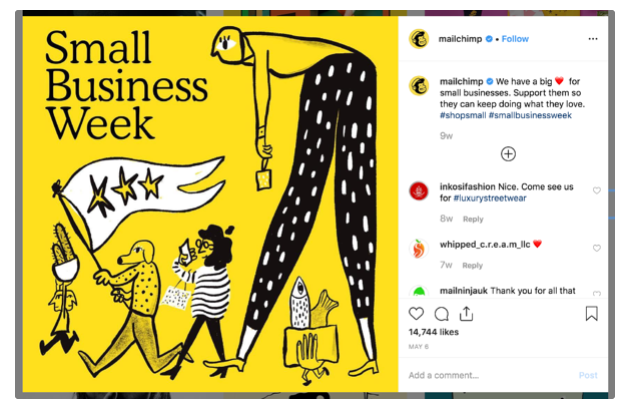 Fewer than half of its Instagram posts have to do with email marketing or the MailChimp product, yet the MailChimp team consistently figures out how to make the posts relevant to its followers— all while including fun, engaging, on-brand graphics and videos.
Fewer than half of its Instagram posts have to do with email marketing or the MailChimp product, yet the MailChimp team consistently figures out how to make the posts relevant to its followers— all while including fun, engaging, on-brand graphics and videos.
MailChimp likewise utilizes its Instagram to feature genuine customer stories and testimonials, which can hugely affect potential consumers in the Consideration and Decision stages. At last, MailChimp utilizes a took called LinkinBio, which permits Instagram users to navigate to its landing page or other digital content (since Instagram doesn’t offer live links on its platform). This creates a clear conversion path for consumers who discover or research MailChimp on Instagram and want to learn more on its website.
Invest in B2B Marketing and Reach Your Business Customers
Marketing isn’t successful unless you keep your audience in mind, and no other audience is as fickle and critical as business customers. Your marketing should convey how your business can help theirs. Giving a solution to a potential problem is the key.
Utilize these tips and strategies to understand your B2B audience, balance your buyer personas, and viably use B2B advertising systems that connect them. At the point when you’re centered around your audience, your marketing will do the same.
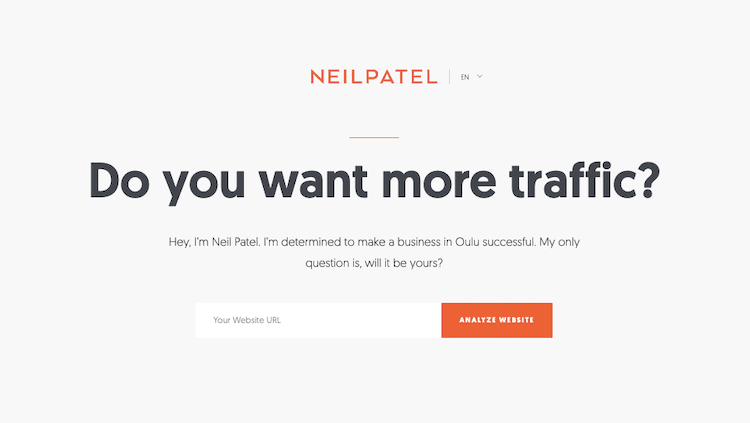 2. Optimize for various devices
2. Optimize for various devices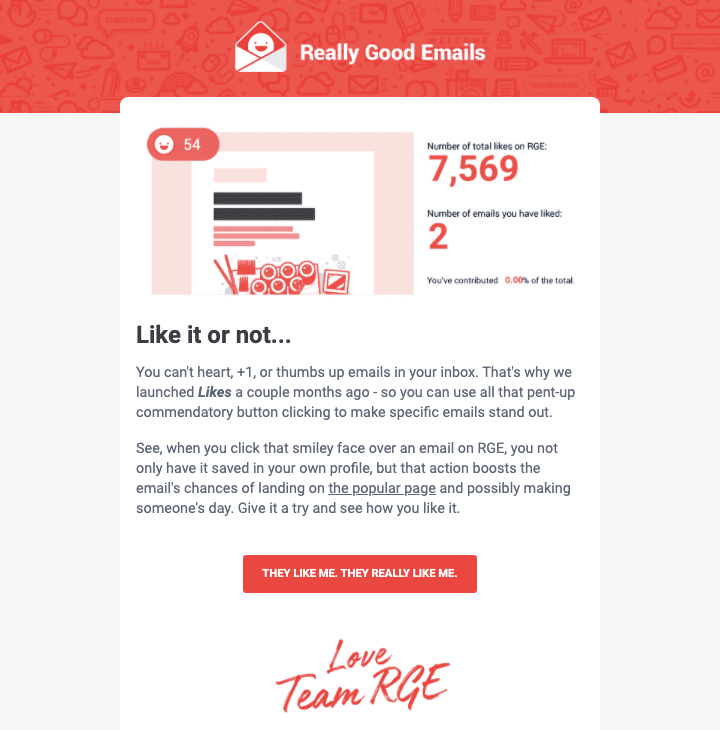 Using personalization in your CTAs can make them more viable. The present innovation offers different kinds of chances for marketing automation and triggered communication. With the help of innovation, you can have different Call-to-Actions relying upon which channel the individual came from, and what their activity was before seeing your CTA.
Using personalization in your CTAs can make them more viable. The present innovation offers different kinds of chances for marketing automation and triggered communication. With the help of innovation, you can have different Call-to-Actions relying upon which channel the individual came from, and what their activity was before seeing your CTA. 5. Brief & noticeable CTAs
5. Brief & noticeable CTAs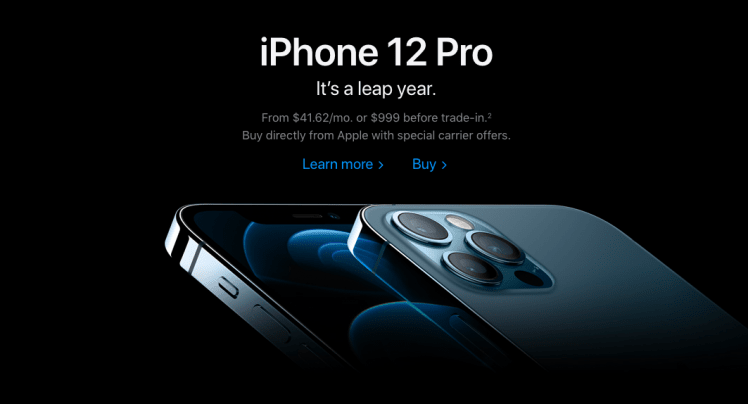 7. Analyze and double-check the path
7. Analyze and double-check the path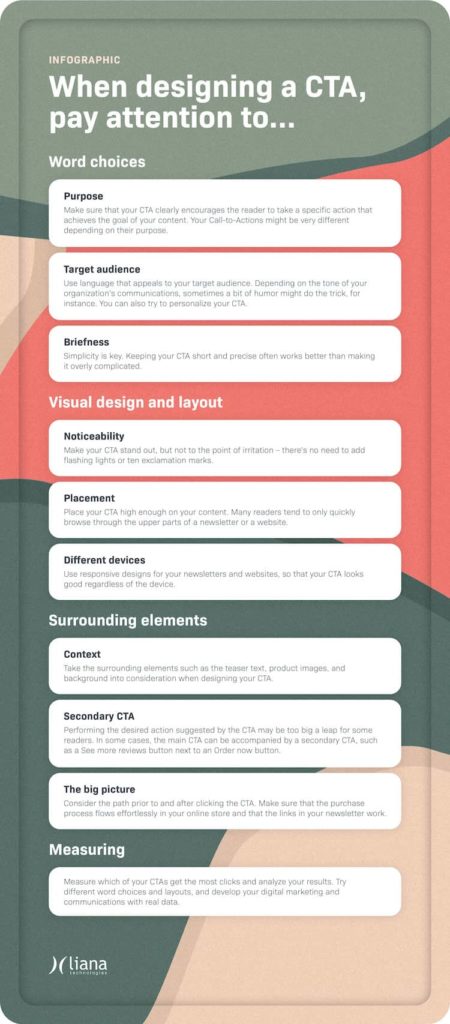 Take advantage of your digital marketing by measuring and examining the performance of your CTAs.Try different word choices, visual components, and placements and make changes dependent on real information. This helps you to improve your communications and digital marketing.
Take advantage of your digital marketing by measuring and examining the performance of your CTAs.Try different word choices, visual components, and placements and make changes dependent on real information. This helps you to improve your communications and digital marketing.

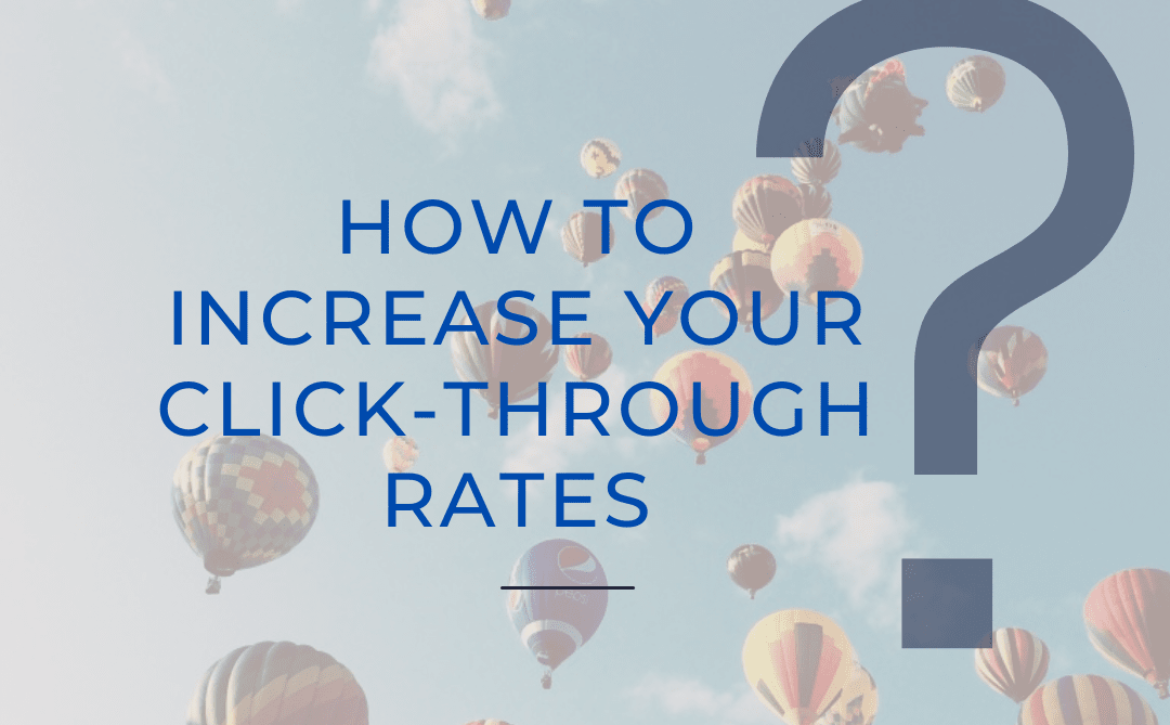

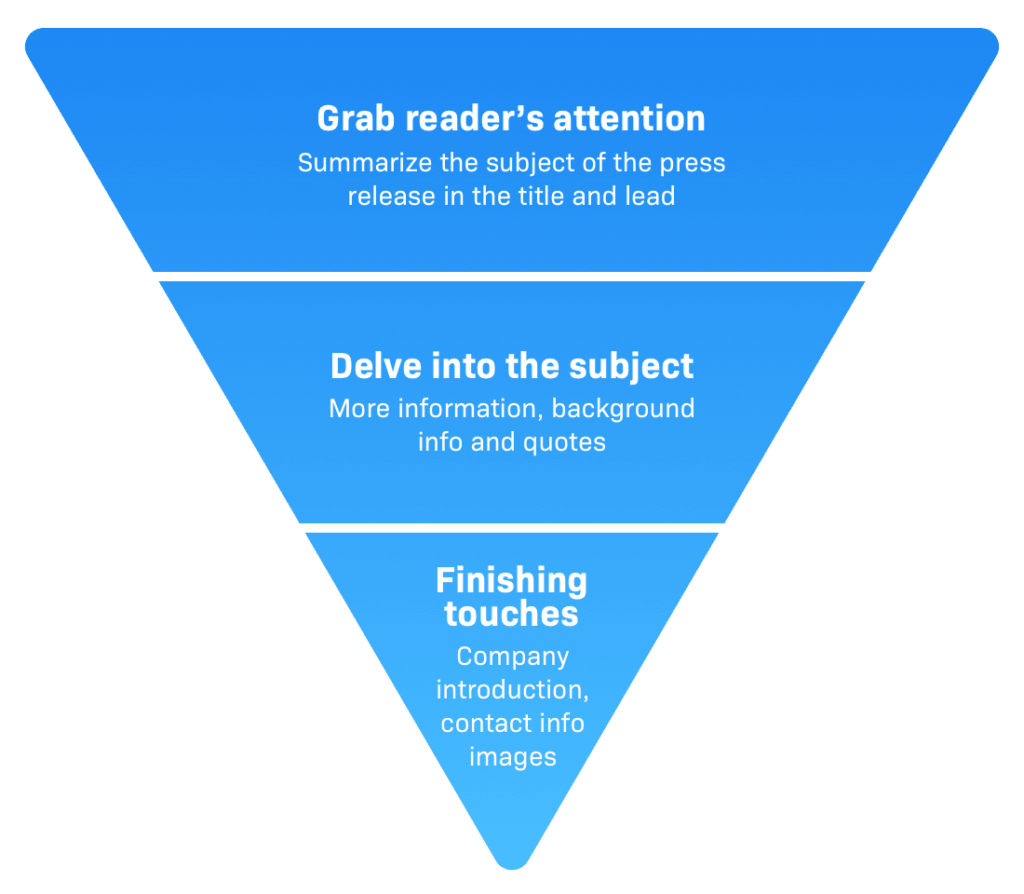 1.Grab the reader’s attention
1.Grab the reader’s attention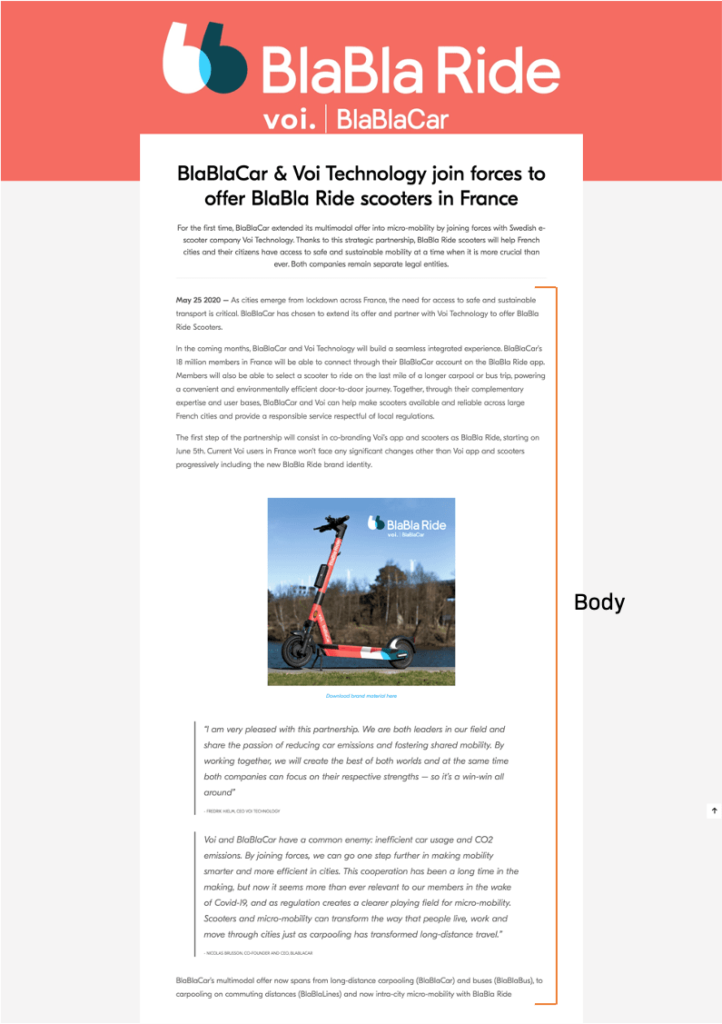 In the body of your press release, you can embed quotes or statistics, to make your piece more complete and solid.
In the body of your press release, you can embed quotes or statistics, to make your piece more complete and solid. Even if you are an international company, you should add a boilerplate to your press release, just like McDonald’s does:
Even if you are an international company, you should add a boilerplate to your press release, just like McDonald’s does: Before sending your press release, ensure that you have these components – the ideal length being one page. Remember to add the logo of your organization to start with, so the reader knows which organization is being referred to.
Before sending your press release, ensure that you have these components – the ideal length being one page. Remember to add the logo of your organization to start with, so the reader knows which organization is being referred to.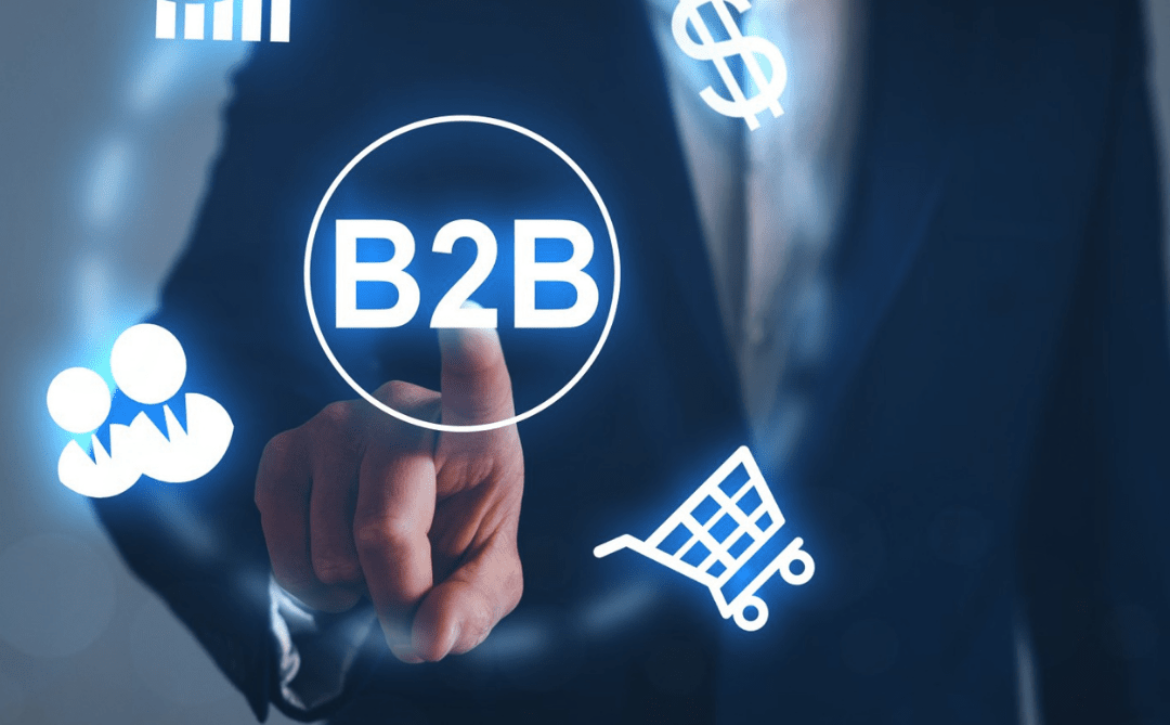
 B2B Email Marketing
B2B Email Marketing B2B Social Media Marketing
B2B Social Media Marketing It’s almost difficult to know the plan of each and every individual who lands on your
It’s almost difficult to know the plan of each and every individual who lands on your  LeadPages produces various sorts of content resources, like a blog, customer stories, a podcast, and a webinar. The variety in these resources permits the organization to reach customers where they are utilizing the strategy that best impacts them.
LeadPages produces various sorts of content resources, like a blog, customer stories, a podcast, and a webinar. The variety in these resources permits the organization to reach customers where they are utilizing the strategy that best impacts them. Fewer than half of its Instagram posts have to do with email marketing or the MailChimp product, yet the MailChimp team consistently figures out how to make the posts relevant to its followers— all while including fun, engaging, on-brand graphics and videos.
Fewer than half of its Instagram posts have to do with email marketing or the MailChimp product, yet the MailChimp team consistently figures out how to make the posts relevant to its followers— all while including fun, engaging, on-brand graphics and videos.